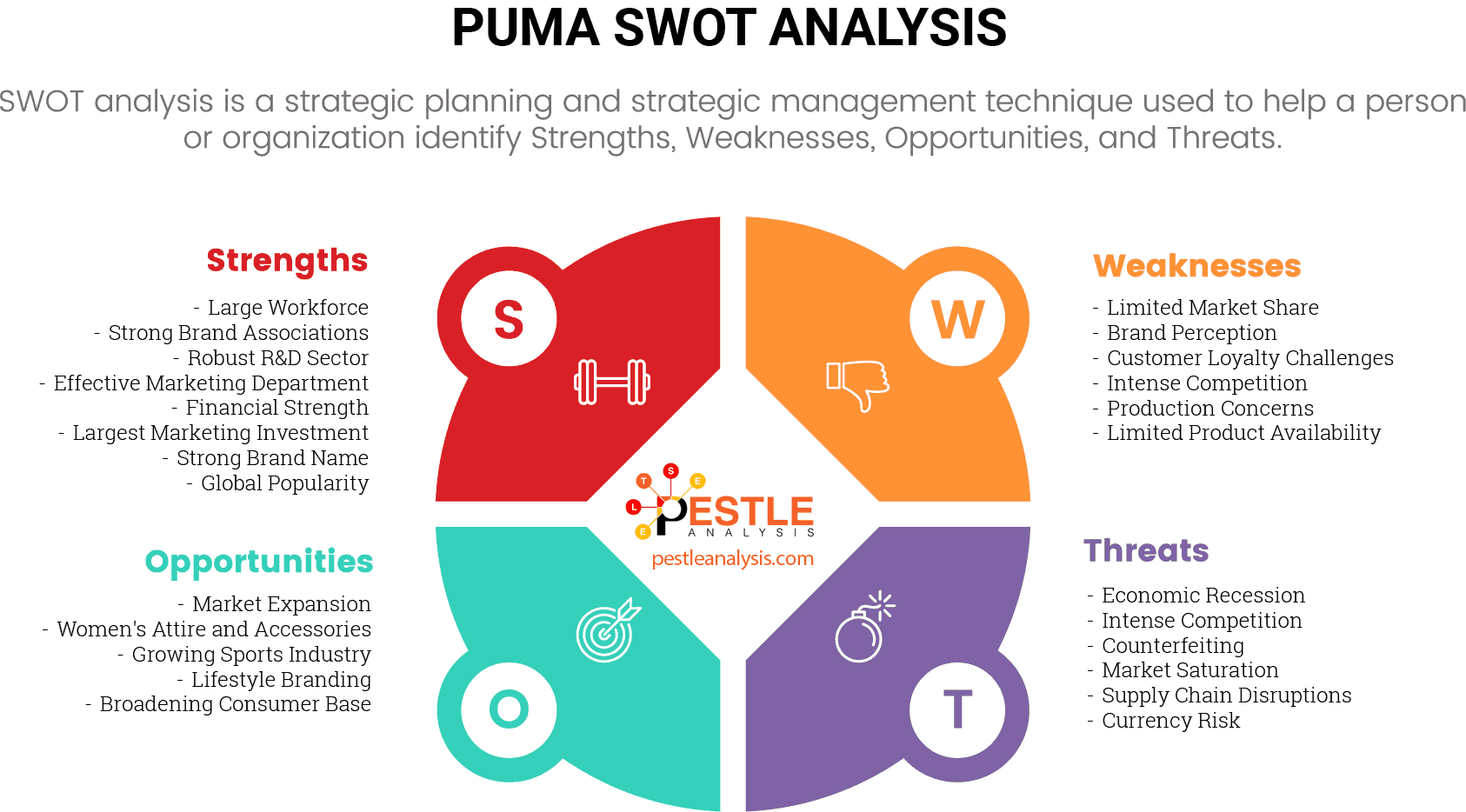The Puma SWOT analysis studies 8 Strengths, 6 Weaknesses, 5 Opportunities and 6 Threats that affect the company's operations.
You might have already heard about the notorious cat that has taken over athletic apparel; Puma. Did you know that Puma came into existence at the same time as Adidas did and that too by two brothers!
So the story is that back in 1924, two brothers started a company that went by the name of Gebrüder Dassler Schuhfabrik, which translates to "Dassler Brothers Shoe Factory." As fate would have it, the two chaps fell off from each other and decided to split the family business into two separate brands, you guessed it, Adidas and Puma.
Headquartered in Herzogenaurach, Bavaria, Germany, Puma was started in 1948 by Rudolf Dassler and sold athletic accessories, clothes, and shoes, amongst other things.
Today, Puma is the third largest company producing sportswear. As of 2023, Puma has managed to generate $8.5 billion in revenue.
Currently, Arne Freundt serves as the CEO of Puma. As per the latest reports from 2023, Puma operates in over 120 countries and employs more than 16,000 people worldwide. Let’s explore the Puma SWOT analysis in more detail to see where it stands in the market these days and how Puma has managed to stay relevant all these years.
SWOT Analysis of Puma
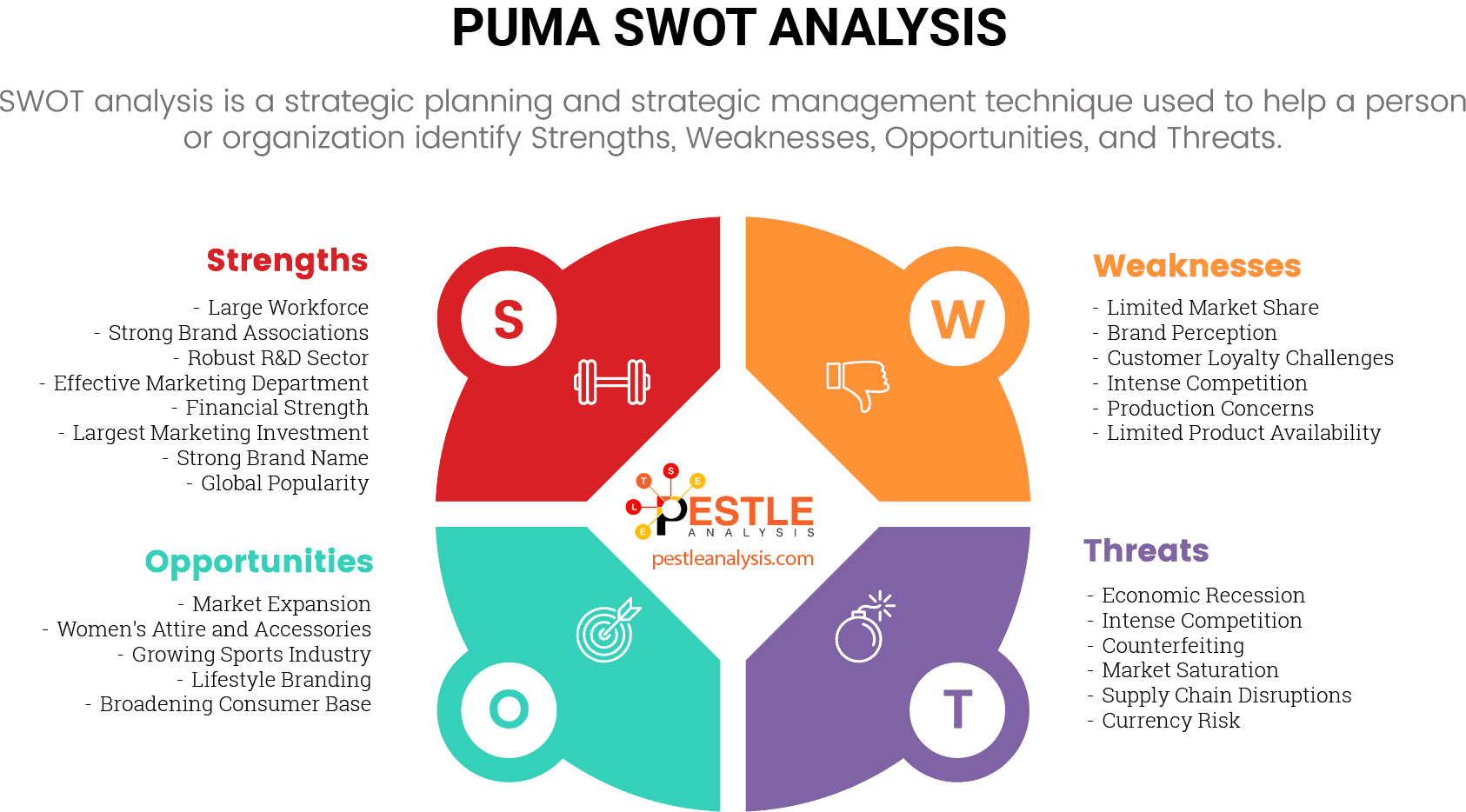
A SWOT analysis is a tool that helps people understand the strengths, weaknesses, opportunities, and threats of a business or project. Here's what each part means:
- Strengths: These are things that the business is really good at or advantages it has over others. For example, being very popular or having cool designs.
- Weaknesses: These are areas where the business might not be as good or things it struggles with. Maybe it's not very well-known in some countries.
- Opportunities: These are chances or situations that the business can use to its advantage. Like a new trend in sportswear that they can follow.
- Threats: These are things that could cause problems for the business, like new competitors or changes in fashion.
Puma, like any other big company, needs a SWOT analysis to understand how it can improve and stay competitive. By knowing its strengths, it can build on them. By knowing its weaknesses, it can work to fix them. By spotting opportunities, it can take action to benefit from them. And by being aware of threats, it can prepare and protect itself.
Using both a SWOT and a PESTLE analysis together gives a complete picture of both internal and external factors affecting Puma. This way, Puma can make better decisions to grow and succeed. Feel free to combine today's SWOT analysis with our PESTLE analysis of Puma!
Puma's Strengths
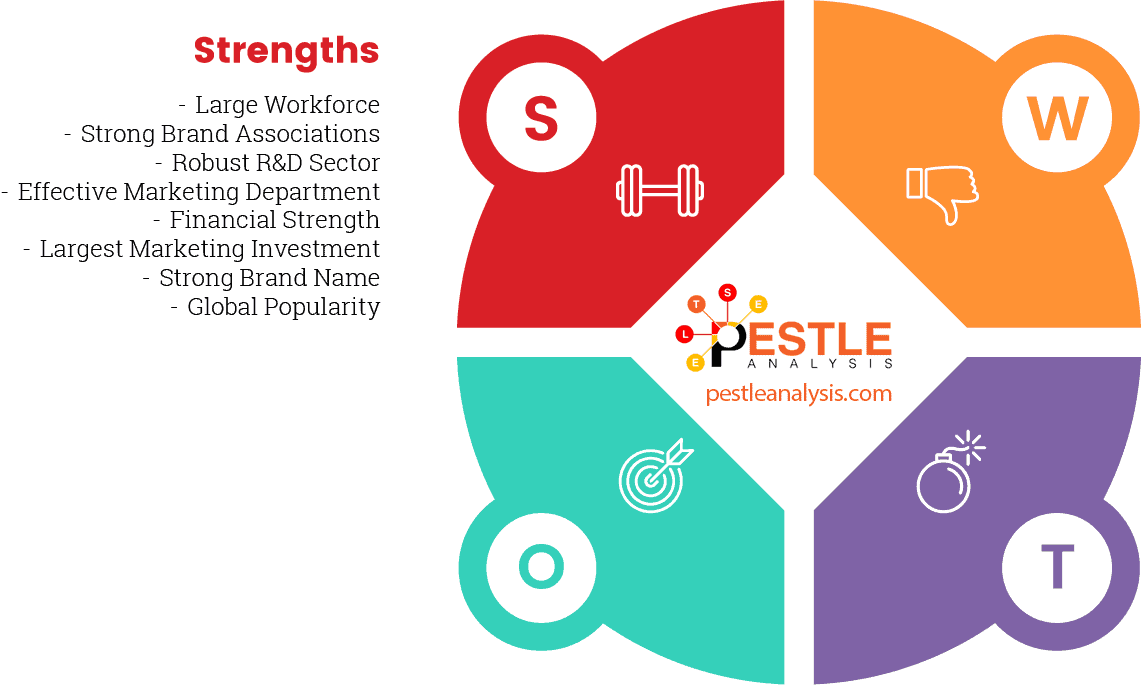
- Large Workforce: Employing over 16,000 people worldwide demonstrates Puma's stability and low employee turnover rate.
- Strong Brand Associations: Puma is associated with many stellar brands around the world, which is vital in highlighting it as a top-notch brand itself. Puma is a key supplier of racing gear for top motorsport teams in Formula One, NASCAR, and other racing series.
- Robust R&D Sector: Puma's extensive Research & Development department keeps it at the forefront of innovation and the latest trends.
- Effective Marketing Department: Puma's strong marketing team ensures the brand remains visible and relevant, keeping the public informed about new products and initiatives.
- In 2014, Puma appointed pop superstar Rihanna as their Creative Director. This strategic move was part of Puma’s broader effort to rejuvenate its brand and appeal to a younger, fashion-forward audience. Rihanna’s influence and unique style were instrumental in transforming Puma’s image and expanding its reach beyond traditional sportswear into the lifestyle and fashion segments.
- Financial Strength: The ability to invest substantial amounts when needed allows Puma to undertake large projects and initiatives.
- Puma's largest marketing investment demonstrates the brand's financial strength and commitment to enhancing its market position. This significant investment can bolster brand awareness and attract new customers globally
- Strong Brand Name: Puma's globally recognized brand name is a significant asset, bolstered by a huge following and support from celebrity endorsements. Endorsements from celebrities and athletes enhance Puma's brand image and attract a broad audience. How many of us think of a feral jungle cat upon hearing the name Puma instead of a pair of kick-ass sneakers?
- Global Popularity: The brand name "Puma" is synonymous with high-quality sportswear and footwear, widely recognized and respected around the world.
- In 2019, Puma signed a long-term partnership deal with Manchester City FC, one of the most successful football clubs in the English Premier League. This partnership extends to the City Football Group’s other teams, including Melbourne City FC, Girona FC, and more. This collaboration has been instrumental in increasing Puma’s visibility and popularity across different continents.
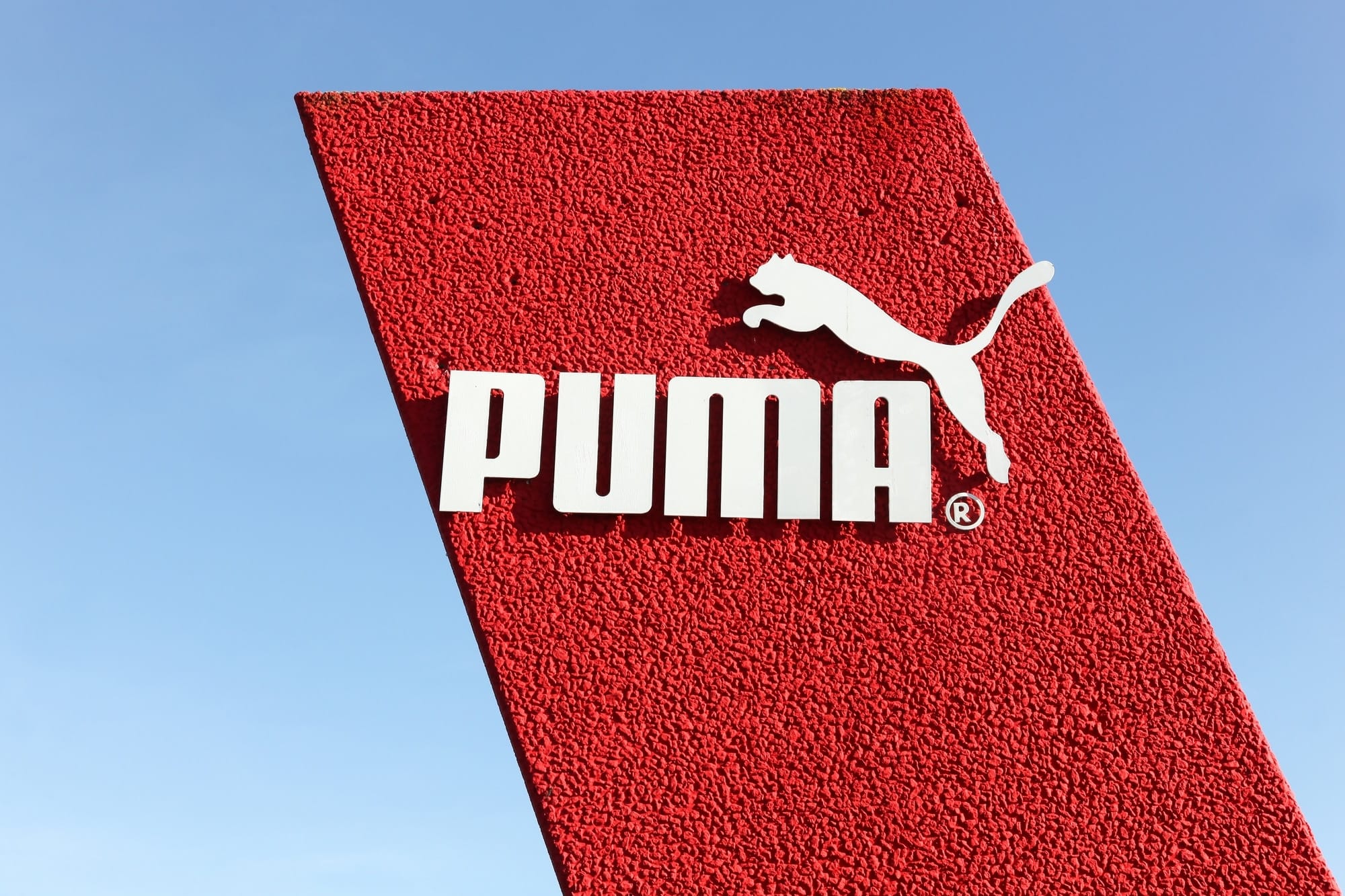
This robust set of strengths, coupled with its strategic partnerships and innovative practices, continues to position Puma as a leading brand in the sportswear industry.
If you want to learn more about the strengths any business should consider in their SWOT analysis, check out the full list of strengths we have! It's a great way to understand what makes companies successful.
Puma's Weaknesses
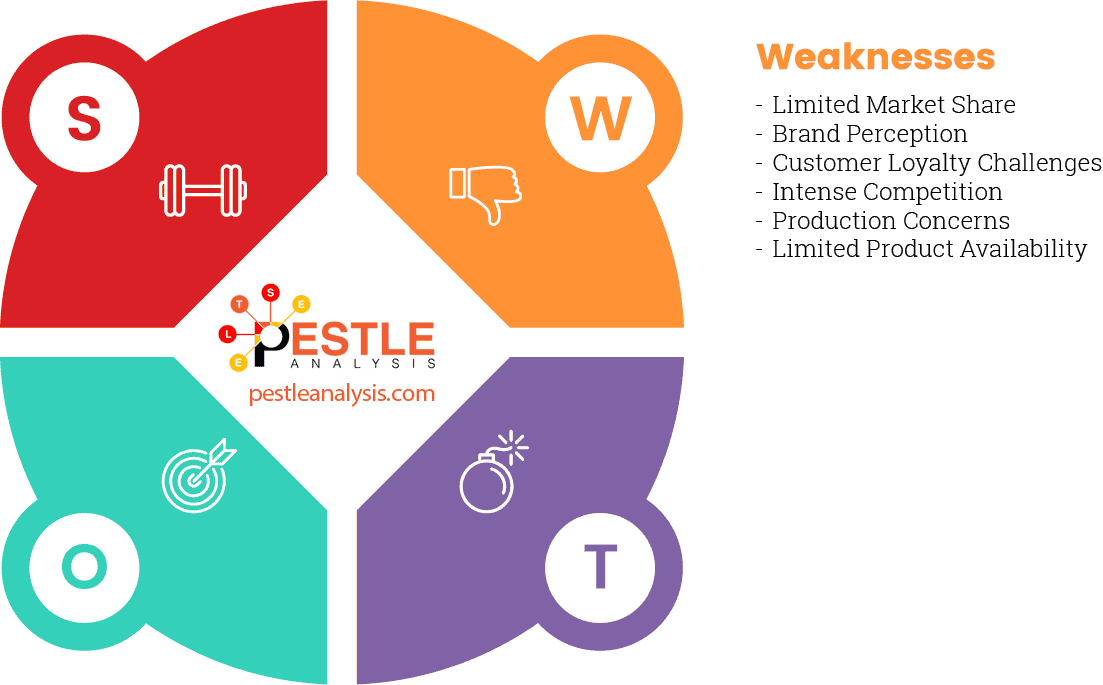
There’s a reason Puma isn’t the number-one brand in the sportswear industry at the moment: it has weaknesses.
- Limited Market Share: Whereas we’ve established that Puma is notorious worldwide, it still doesn’t have as much market share as some of its rivals, such as Nike and Adidas. Ouch, imagine being beaten by the enemy brother!
- Brand Perception: Puma is often seen as a cheaper alternative to high-end brands, affecting its overall brand value and prestige.
- Customer Loyalty Challenges: In the highly competitive sportswear industry, maintaining a loyal customer base is difficult due to numerous better-priced alternatives.
- Intense Competition: Puma faces competition from both higher-priced and lower-priced brands, catering to various customer needs and preferences.
- Production Concerns: A significant portion of Puma’s production is concentrated in Asian markets, which have been criticized for labor exploitation and underpayment issues.
- Limited Product Availability: Puma's initial limited release of innovative products, such as the Re2.0 sneakers, restricts its ability to meet broader consumer demand and fully capitalize on market opportunities.
- The initial release of only 500 pairs of Re2.0 sneakers may limit the immediate impact of the product on the market. Puma needs to develop scalable solutions to meet broader demand and achieve significant market penetration.
These weaknesses highlight areas where Puma can improve to strengthen its position in the sportswear industry.
Curious about what weaknesses businesses need to watch out for? Head over here to see the complete list of weaknesses to consider in a SWOT analysis. It's important to know where improvements can be made!
Puma's Opportunities

- Market Expansion: Puma has the opportunity to increase its market share by actively expanding into newer countries and emerging sports markets.
- Puma is set to dress the team of the Arab Republic of Egypt for the Paris 2024 Olympic Games. By partnering with the Egyptian Ministry of Youth and Sports and the Egyptian Olympic Committee, Puma can capitalize on Egypt's growing economic potential and passion for sports. This can open up new market opportunities and drive sales in the region
- Women's Attire and Accessories: With a growing interest in sports and fitness among women, Puma can focus on expanding its range of women's clothing and accessories. More women are interested in sports and fitness as each day passes, they should have as many options to choose from as the men do.
- Growing Sports Industry: The exponential growth of the sports industry provides Puma with the chance to associate itself with new sports events and increase its presence.
- Lifestyle Branding: Puma can extend its influence by promoting its products as part of everyday life, appealing to non-athletes and those who enjoy stylish, comfortable clothing. Why limit it to a certain portion? Puma can become a style statement of sorts that goes beyond the realm of sports.
- Puma's collaboration with global superstar Selena Gomez has boosted Puma's visibility among younger consumers. The partnership has also helped the brand position itself as a fashionable choice beyond the gym. Gomez's influence has extended Puma's reach into everyday fashion, making Puma a go-to brand for both athletic and casual wear. The collections launched under this collaboration have included stylish, versatile pieces that blend sports functionality with streetwear aesthetics, appealing to a broad audience who value both comfort and style in their daily lives.
- Broadening Consumer Base: By becoming a style statement beyond the realm of sports, Puma can attract a wider audience who wish to identify with the brand as part of their lifestyle. It has the opportunity to become the go-to choice for a group of people who wish to identify themselves with Puma wear.
- The A$AP-PUMA collaboration opens doors to new consumer segments, particularly those interested in streetwear and motorsport-inspired fashion. This can expand Puma’s customer base and increase market share.
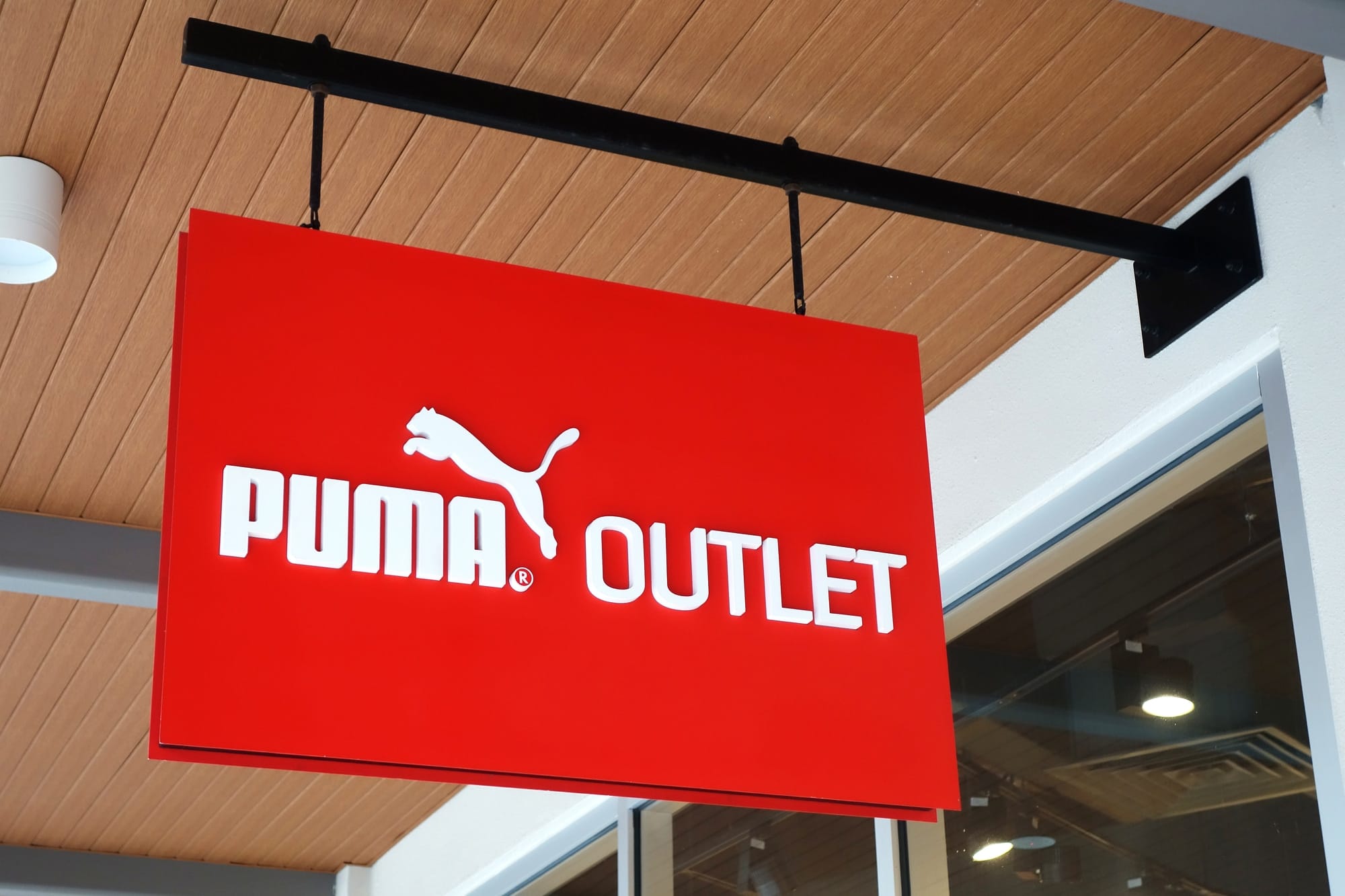
These opportunities provide Puma with various avenues to grow and enhance its brand presence globally.
Interested in finding out what opportunities businesses can take advantage of? Explore a full set of opportunities for a SWOT analysis. You'll see how companies can grow and succeed by seizing the right chances.
Puma's Threats
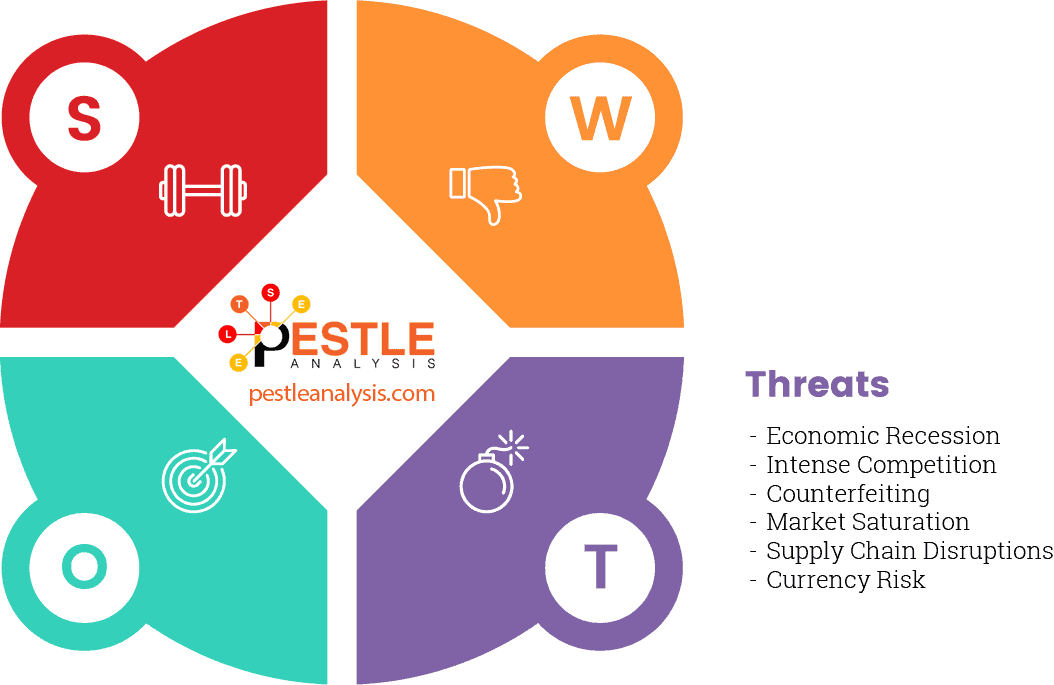
- Economic Recession: The global economic recession post-COVID-19 has negatively impacted consumer spending, posing a financial threat to Puma despite its ability to recover losses.
- Puma reported a significant drop in quarterly earnings in early 2024. The company's revenue decreased by 15% compared to the same period in the previous year, primarily due to reduced sales in key markets such as Europe and North America.
- Intense Competition: Puma faces fierce competition from a wide range of brands, including Converse, Bata, Reebok, Nike, and Adidas, which offer both more expensive and cheaper alternatives.
- Counterfeiting: The prevalence of counterfeit Puma products in the market leads to significant potential sales losses and damages the brand's reputation.
- Market Saturation: The sportswear market is highly saturated, making it challenging for Puma to differentiate itself and capture additional market share.
- Supply Chain Disruptions: Potential disruptions in the supply chain, especially in regions criticized for labor practices, can affect production and delivery schedules.
- Currency Risk: The necessity to account for hyperinflation can complicate financial reporting and forecasting, leading to unpredictable financial outcomes. Such currency risks can deter investors and affect stock prices, impacting the overall market perception of Puma.
- The devaluation of the Argentine peso and hyperinflation significantly affected Puma's financial results in 2023, reducing net income to approximately 305 million euros. This volatility introduces a level of financial instability, making it challenging to maintain consistent profit margins.
These threats highlight the challenges Puma faces in maintaining its market position and financial stability.
Want to learn about the threats that can affect businesses? Check out our detailed list of threats to include in a SWOT analysis. Knowing these can help companies prepare and stay strong!
Recommendations based on Puma's SWOT Analysis
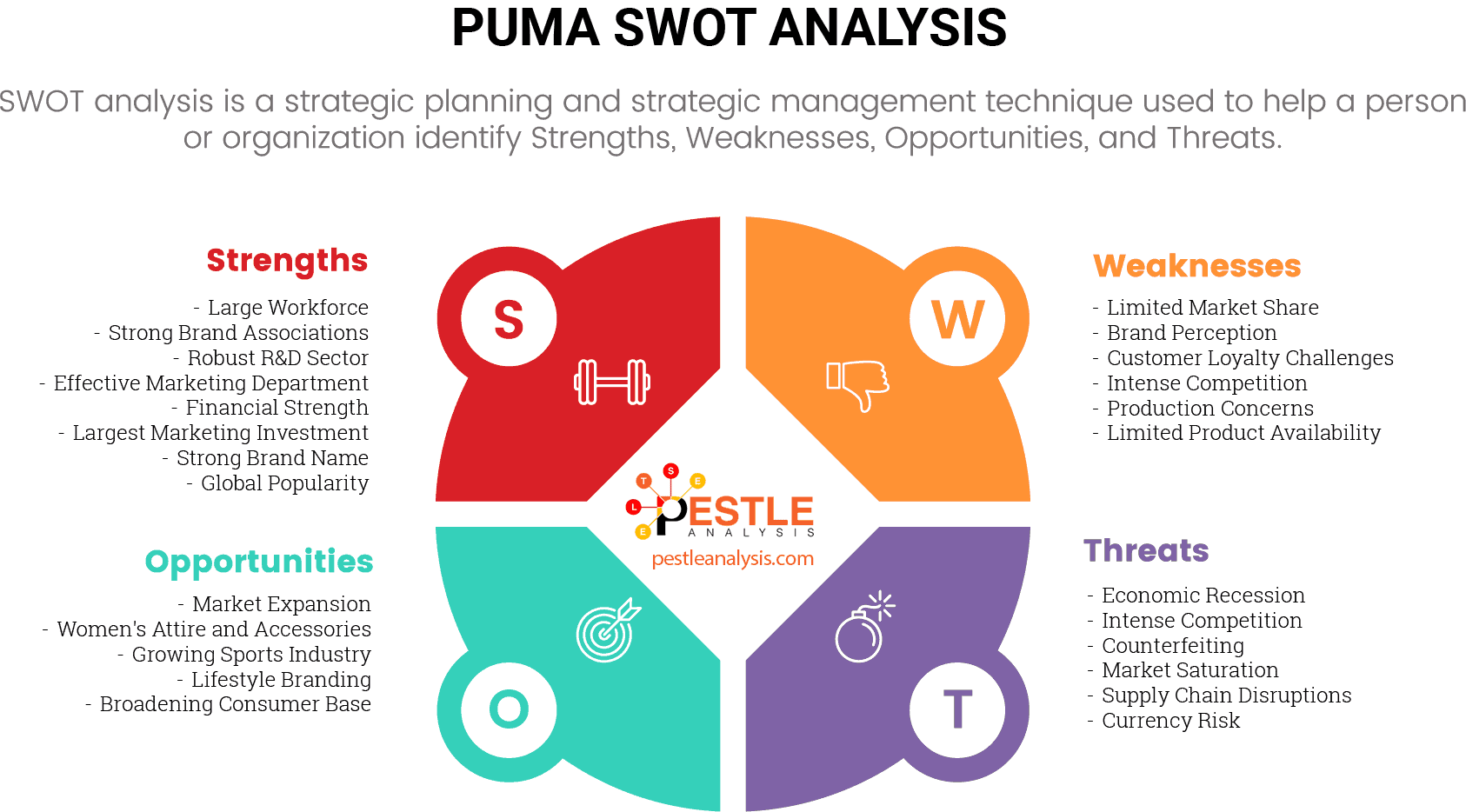
Puma is easily the brand which is always in the top 5 choices of a sportswear enthusiast's consideration set. With a global reach and rockhard influence, Puma is a brand that we anticipate to see as a player in the industry for many years to come.
As obvious from this SWOT analysis, Puma’s strengths and opportunities outweigh their weaknesses and threats. However, caution should never be completely disregarded. They do face some serious competition with pre-existing brands as well as recent entrants, so they do need to dive into strategies of growing their presence even further. We’ve known and loved Puma for literally more than 70 years now! Some serious props to Puma for keeping it real for all these years when so many brands vanish in a third of this time. We hope to see great things from the brand in the future.
To gain a deeper understanding of how SWOT analysis can benefit any business, I invite you to explore our comprehensive guide on SWOT analysis. This guide provides detailed insights into identifying strengths, weaknesses, opportunities, and threats, helping businesses leverage their advantages and mitigate potential risks.
Additionally, we have recently conducted SWOT analyses of Puma's major competitors. Reviewing these analyses will give you a broader perspective on the competitive landscape in the sportswear industry. By comparing Puma’s SWOT analysis with those of its rivals, you can better understand how Puma stacks up in terms of market positioning, brand strength, innovation, and challenges.

